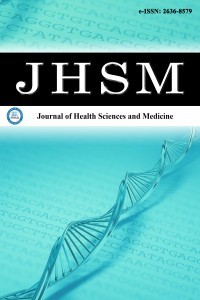1.
Rathee M, Jain P. Anatomy, Head and Neck, Lateral Pterygoid Muscle. [Updated 2022 Oct 24]. In: StatPearls [Internet]. Treasure Island (FL): StatPearls Publishing; 2024 Jan-. Available from: https://www.ncbi.nlm.nih.gov/books/NBK549799/
2.
Bhutada MK, Phanachet I, Whittle T, Peck CC, Murray GM. Activity of superior head of human lateral pterygoid increases with increases in contralateral and protrusive jaw displacement. <em>Eur J Oral Sci</em>. 2007;115(4):257-264. doi:10.1111/j.1600-0722.2007. 00461.x
3.
Jivnani HM, Tripathi S, Shanker R, Singh BP, Agrawal KK, Singhal, R. A study to determine the prevalence of temporomandibular disorders in a young adult population and its association with psychological and functional occlusal parameters. <em>J Prosthodont.</em> 2019;28(1):e445-e449. doi:10.1111/jopr.12704
4.
Murray GM, Bhutada M, Peck CC, Phanachet I, Sae-Lee D, Whittle T. The human lateral pterygoid muscle. <em>Arch Oral Biology</em>. 2007;<em>52</em>(4):377-380. doi:10.1016/j.archoralbio.2006.10.002
5.
Rodríguez-Gimillo P, Valverde-Navarro A, Margaix-Muñoz M, Poveda-Roda R, Delgado-Navarro C, Puig-Bernabeu J. Lateral pterygoid muscle ultrasound-guided injection: a technical note. <em>J Stomatol Oral Maxillofac Surg.</em> 2023:101547. doi:10.1016/j.jormas.2023.101547
6.
Fu KY, Chen HM, Sun ZP, Zhang ZK, Ma XC. Long-term efficacy of botulinum toxin type A for the treatment of habitual dislocation of the temporomandibular joint. <em>Br J Oral Maxillofac Surg.</em> 2010;48(4):281-284. doi:10.1016/j.bjoms.2009.07.014
7.
Sato F, Kino K, Sugisaki M, et al. Teeth contacting habit as a contributing factor to chronic pain in patients with temporomandibular disorders. <em>J Med Dent Sci.</em> 2006;53(2):103-109.
8.
Salame TH, Peck CC, Murray GM. A new method for lateral pterygoid electromyographic electrode placement. <em>J Prosthet Dent.</em> 2007;98(3):224-231. doi:10.1016/S0022-3913(07)60059-6
9.
Borghol K, Abdelrahman A, Pigadas N. Guided botulinum toxin injection to the lateral pterygoid muscles for recurrent dislocation of the temporomandibular joint. <em>Br J Oral Maxillofac Surg</em>. 2021;59(7):845-846. doi:10.1016/j.bjoms.2020.09.036
10.
Pons M, Meyer C, Euvrard E, Weber E, Sigaux N, Louvrier A. MR-guided navigation for botulinum toxin injection in the lateral pterygoid muscle. First results in the treatment of temporomandibular joint disorders. <em>J Stomatol Oral Maxillofac Surg.</em> 2019;120(3):188-195. doi:10.1016/j.jormas.2018.11.002
11.
Martenot A, Devoti JF, Pons M, et al. Persistent myogenic temporomandibular disorders: are navigation-guided botulinum toxin-A injections into the lateral pterygoid muscles effective?. <em>J Stomatol Oral Maxillofac Surg</em>. 2024;125(5):101715. doi:10.1016/j.jormas.2023.101715
12.
Lee ST, Kim D, Park JH, Kwon TG. Ultrasound-guided intraoral <em>Botulinum</em> toxin injection into the lateral pterygoid muscle for chronic temporomandibular joint dislocation. <em>J Korean Assoc Oral Maxillofac Surg</em>. 2024;50(1):41-48.
13.
Skármeta NP, Espinoza-Mellado P, Chana P. Orofacial dystonia and other oromandibular movement disorders. <em>InTech.</em> 2018;10-36. doi:10.5772/intechopen.78607
14.
Machado D, Martimbianco ALC, Bussadori SK, Pacheco RL, Riera R, Santos EM. <em>Botulinum</em> toxin type a for painful temporomandibular disorders: systematic review and meta-analysis. <em>J Pain.</em> 2020;21:281-293. doi:10.1016/j.jpain.2019.08.011
15.
Lund JP, Donga R, Widmer CG, Stohler CS. The pain-adaptation model: a discussion of the relationship between chronic musculoskeletal pain and motor activity. <em>Canad J Physiol Pharmacol.</em> 1991;69(5):683-694. doi:10.1139/y91-102
16.
Gil-Martínez A, Grande-Alonso M, López-de-Uralde-Villanueva I, López-López A, Fernández-Carnero J, La Touche R. Chronic temporomandibular disorders: disability, pain intensity and fear of movement. <em>J Headache Pain</em>. 2016;17(1):103. doi:10.1186/s10194-016-0690-1
17.
Kucukguven A, Demiryurek MD, Kucukguven MB, Vargel I. A novel injection technique to the lateral pterygoid muscle for temporomandibular disorders: a cadaveric study. <em>Plastic Reconstruct Surg.</em> 2021;<em>148</em>(5):785e-790e.
18.
Mahan PE, Wilkinson TM, Gibbs CH, Mauderli A, Brannon LS. Superior and inferior bellies of the lateral pterygoid muscle EMG activity at basic jaw positions. <em>J Prosthet Dent.</em> 1983;50(5):710-778.
19.
Reiter S, Goldsmith C, Emodi-Perlman A, Friedman-Rubin P, Winocur E. Masticatory muscle disorders diagnostic criteria: the American Academy of Orofacial Pain versus the research diagnostic criteria/temporomandibular disorders (RDC/TMD). <em>J Oral Rehabil</em>. 2012;39(12):941-947. doi:10.1111/j.1365-2842.2012. 02337.x
20.
Finden SG, Enochs WS, Rao VM. Pathologic changes of the lateral pterygoid muscle in patients with derangement of the temporomandibular joint disk: objective measures at MR imaging. <em>AJNR Am J Neuroradiol</em>. 2007;28(8):1537-1539. doi:10. 3174/ajnr.A0590

